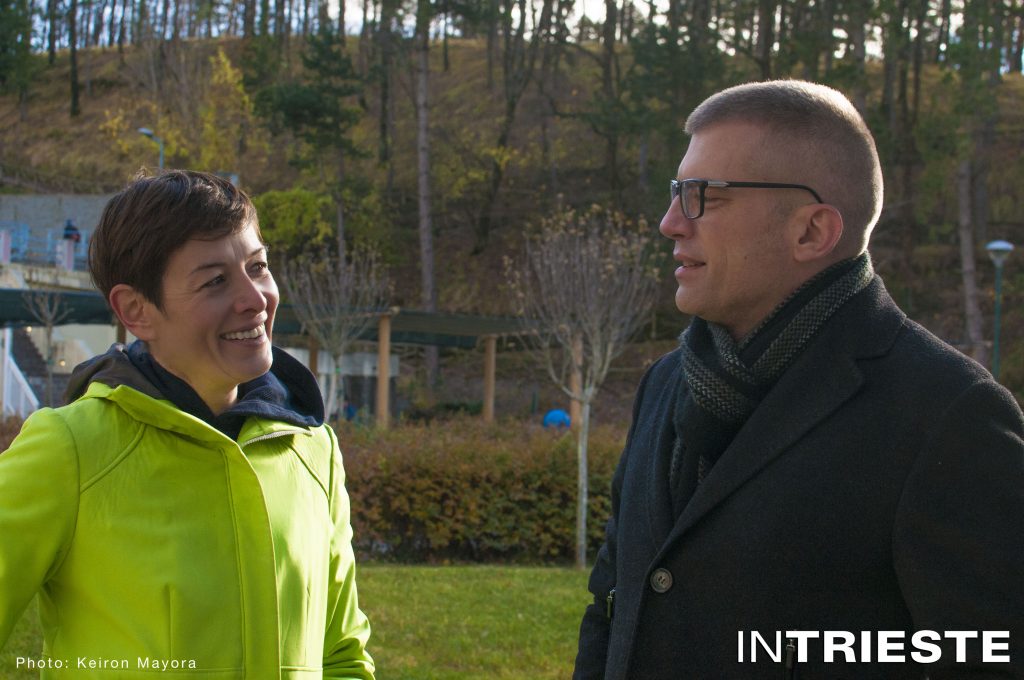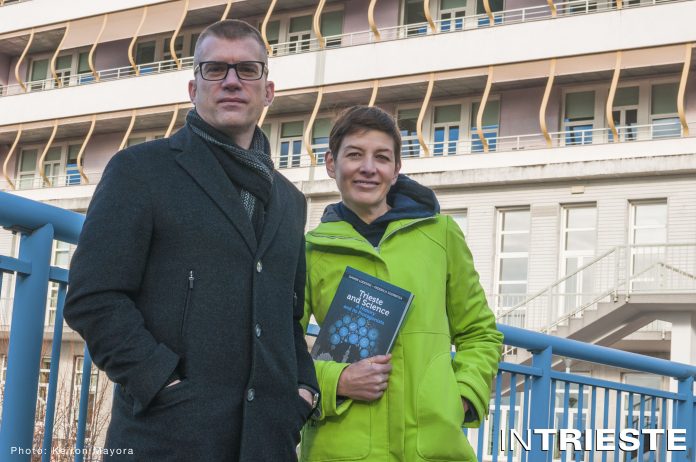by MK
All photographs courtesy of Keiron Mayora
Trieste is definitely a city of science, crammed with universities, institutes, private enterprise, and a staggering 37 researchers for every 1000 workers. The book “Trieste and Science: A History and its Protagonists” published by MGS press and written by Federica Sgorbissa and Davide Ludovisi proves just that.
The book examines curious life stories of seventy scientists who had an impact on Italian and international science world and were intricately connected with the city of Trieste.

Tell us a little about yourselves. Are you connected to the world of science?
Davide: I’ve been involved in scientific dissemination projects since 2001 and in one way or another I’ve always worked in this field.
Federica: I have a background in scientific research myself as I started my professional career with a PhD in cognitive science. In addition to that, I have been working as a science communicator in an international scientific research environment for over fifteen years now.
How did you come up with the idea of writing “Trieste and Science”?
Davide: Anyone who was born and raised in Trieste like me knows that the city has an interesting scientific history, but so far there was no book about all this, at least there was no book with the stories of the many international characters who have had a connection with this city and have left a fundamental mark in the scientific research. And above all, we wanted to tell all this in a journalistic and dynamic way, in a book that could be read a little at a time and not in a precise order.
Federica: Davide and I had been working in the Trieste Science System for several years when we suddenly realized that no one had yet attempted to write a comprehensive text that would tell the whole story of this unique experience and of its protagonists. We thought not only that with our knowledge of the subject we could fill this gap, but also that as journalists we could offer to the reader an exciting and fascinating reading.

What is “Trieste and Science” about?
Davide: The book tells 200 years of history through the events of about 70 important people from the scientific world who have had a link with Trieste. It’s a different way to discover both more about some scientific topics and the personal stories of incredible characters. Many of them have had a life like a movie.
Federica: I think some readers may be surprised to discover that “Trieste’s science history” does not begin in the 1960s, as is usually said, but more than 150 years earlier, in the time of the Hapsburgs’. The establishment of the Trieste System in the 20th century was the result of a long history of innovations, multiculturalism and ingenuity that began when the city was the main port of Austro-Hungarian Empire.
How is it representative of the city of Trieste?
Davide: Trieste is known as the city of the Bora wind, of coffee, of Barcolana and of insurance and port activities. Trieste’s other trait is a scientific system with unique characteristics in Europe and probably in the world. Finding out how all this came about is essential if you want to get an idea of the past and the present of Trieste. And, perhaps, also of its future.
Federica: Even in the face of the most recent events related to the pandemic crisis, I think that the readers may wonder why Trieste is often called the City of Science. Our book tries to answer this question in a way that is easily enjoyed by people with different interests and cultural backgrounds.

Why should everyone read “Trieste and Science”?
Davide: I’m not sure everyone should read it. If you don’t care about history or science and above all you are not interested in stories of often bizarre characters, then you should read something else…
Federica: Because it’s fun!





























